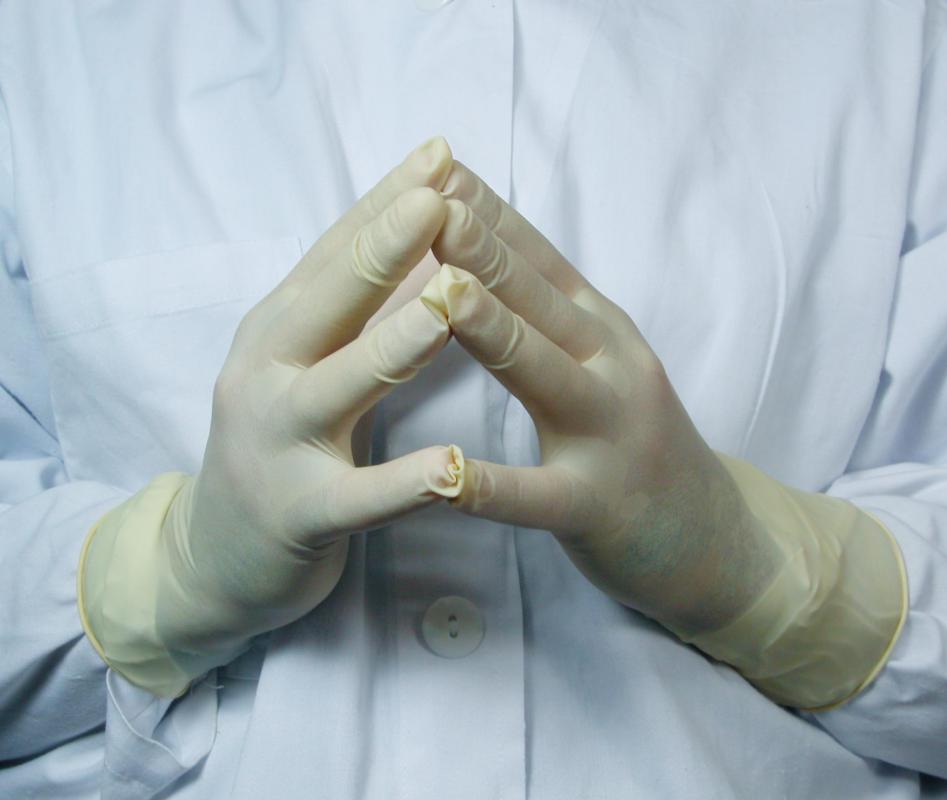At WiseGEEK, we're committed to delivering accurate, trustworthy information. Our expert-authored content is rigorously fact-checked and sourced from credible authorities. Discover how we uphold the highest standards in providing you with reliable knowledge.
What are the Different Types of Pilonidal Cyst Treatment?
There are several methods for pilonidal cyst treatment, depending on the severity of the infection and the needs of the patient. In some cases, a person with an infected cyst can undergo basic pilonidal cyst treatment at home. In other cases, treatment may be performed when a doctor drains the cyst and packs the wound. In the most severe cases, surgery may be needed. Surgical treatment for a pilonidal cyst typically falls into two groups: open wound surgery and closed wound surgery.
Many times, if the cyst is not infected, pilonidal cyst treatment can occur at home, without medical intervention. Patients should regularly wash the area and keep it dry to help avoid an infection from developing. Plucking the hairs as they appear in the area also can help prevent infection. In many cases, if an infection can be avoided, more aggressive treatments, such as surgery, can be avoided as well.

In most cases, medical intervention will be needed. A primary care physician typically begins treatment of an infected pilonidal cyst by applying a local anesthetic to the infected area to numb the cyst. Then, the doctor will open the cyst, drain the liquid, clean out the abscess, and pack the wound. Generally, this type of treatment effectively cures the condition, but the packing must be changed frequently until the wound heals.

In the most severe instances, pilonidal cyst treatment may involve surgery. Surgery is usually recommended after less aggressive treatment has failed. In many cases, if a cyst reappears after a doctor drains, cleans, and packs the wound, surgery may be the next best option. Pilonidal cyst surgery will usually take place in a hospital, rather than a doctor’s office. In most cases, it will be out-patient surgery. There are two types of surgery: open wound surgery and closed wound surgery.

With open wound surgery, the wound is left open after the surgeon cleans out the abscess. This form of surgery may involve a technique called marsupialization. Through this technique, a surgical incision is made, and the cyst is then drained and cleaned. The surgeon then creates a pouch-like flap using the edges of the wound. The wound for open wound surgery does not need to be packed, but it may take one to two months to heal completely.

Another form of surgery is closed wound surgery. It involves opening, draining, and cleaning the cyst, similar to the other treatments. Unlike the other treatments, the surgeon performing closed wound surgery actually closes the wounds using stitches. It will usually heal more quickly than the other forms of surgery, but there also is a higher likelihood that the cyst will eventually reappear after this type of surgery.
After undergoing any form of treatment, it is important to care for the wound to prevent an infection and a recurrence. As a result, a patient must clean and wash around the incision following her doctor’s advice. In addition, creams, oils, or other thick ointments should not be applied to the area. It is also best to sit for only short periods of time, if possible.
AS FEATURED ON:
AS FEATURED ON:














Discuss this Article
Post your comments